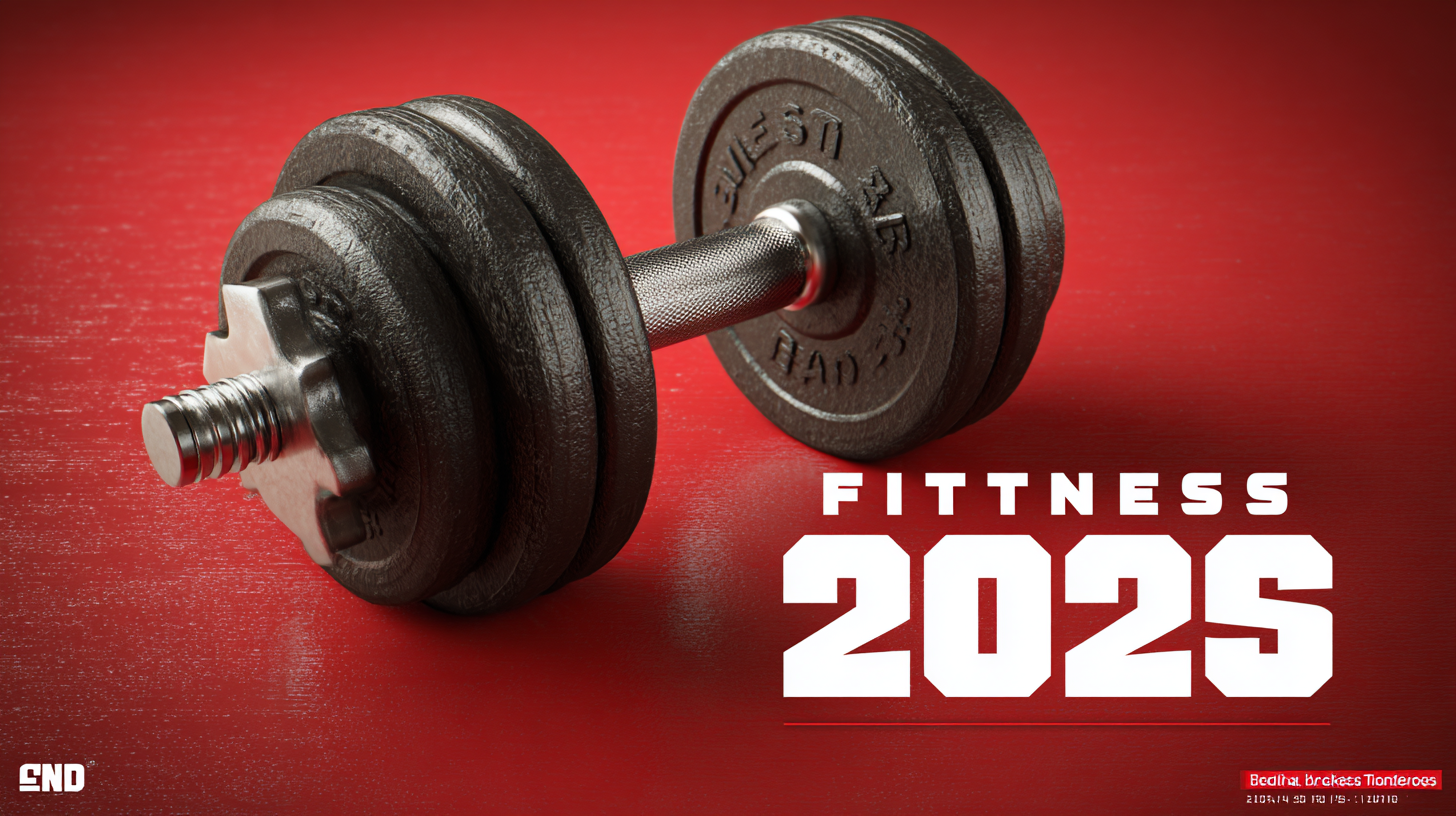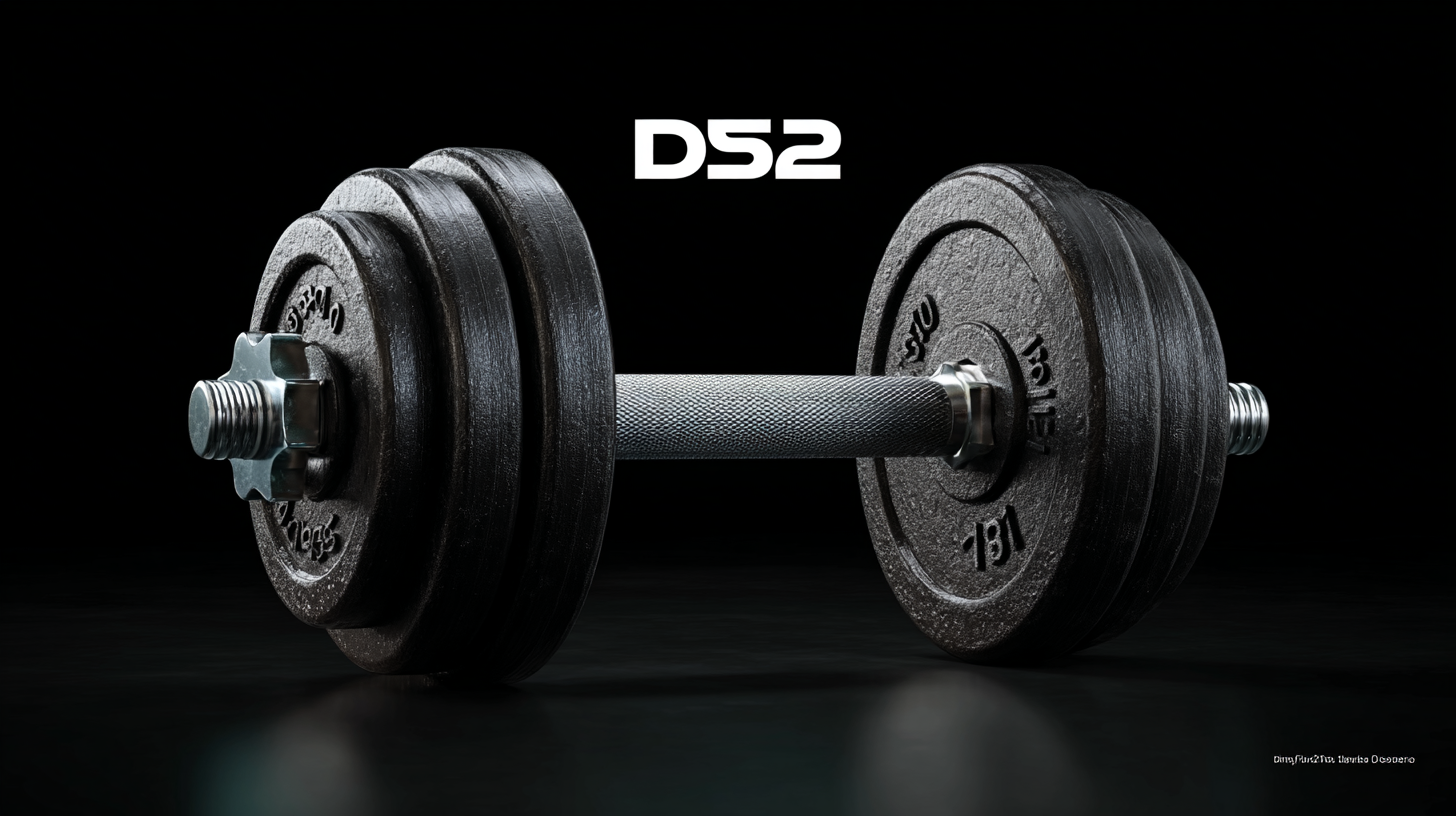
-
Home
-
Products
-
About Us
-
News
-
Contact Us
Leave Your Message

As the fitness industry continues to evolve, the integration of technology into workout routines has become more pronounced, particularly in the realm of strength training. A recent report by IBISWorld highlights that the global fitness equipment market is projected to grow at an annual rate of 3.6% from 2021 to 2026, with a substantial portion attributed to innovations in dumbbells, particularly smart fitness dumbbell designs that cater to a new generation of tech-savvy users. Fitness dumbbells, once considered basic tools for strength training, are now being reimagined with integrated sensors, data tracking capabilities, and connectivity to fitness apps. In 2025, we anticipate these advancements will not only enhance user experience but also revolutionize how fitness enthusiasts engage with their strength training routines, paving the way for a more interactive and data-driven fitness landscape. By leveraging these innovations, both manufacturers and consumers can maximize the potential of fitness dumbbells to meet modern fitness trends.

As we move towards 2025, the landscape of home workouts is set to undergo a significant transformation, primarily driven by the rise of smart dumbbells. These innovative fitness tools are emerging as game-changers, integrating technology with traditional strength training to enhance user experience and effectiveness. With features such as app connectivity, real-time performance tracking, and personalized workout recommendations, smart dumbbells empower users to engage with their fitness routines like never before.
The future of home workouts hinges on the ability to customize and adapt training programs according to individual goals and progress. Smart dumbbells can analyze workout data, allowing users to adjust their weight loads and exercise regimens dynamically. This not only prevents plateaus but also ensures that workouts remain challenging and engaging. As more people embrace remote fitness solutions, the integration of technology into dumbbells symbolizes a shift towards smarter, more efficient home gym setups, making fitness accessible and enjoyable for everyone, regardless of skill level or experience.
| Feature | Description | Benefits | Projected Usage Statistics (2025) |
|---|---|---|---|
| Smart Connectivity | Integration with fitness apps and wearables | Tracks performance and progress seamlessly | 75% of users |
| Adjustable Weights | Easily change weight levels with a dial | Convenient for multiple exercises | 60% of users |
| Built-in AI Coach | Offers real-time feedback during workouts | Enhances workout effectiveness | 50% of users |
| Compact Design | Space-saving and portable | Ideal for home workout spaces | 85% of users |
| Virtual Classes Integration | Access to live and recorded fitness classes | Motivates engagement and consistency | 70% of users |
In 2025, the intersection of artificial intelligence and traditional weight training is set to redefine how we approach fitness, particularly with dumbbells. Integrating AI technology into workouts offers personalized training experiences that adapt in real-time to individual performance levels. Smart dumbbells equipped with sensors can track your strength, form, and endurance, providing instant feedback through accompanying apps. This data-driven approach not only enhances safety but also optimizes workout efficiency, helping users achieve their fitness goals faster and more effectively.
Furthermore, AI algorithms can curate tailored workout programs based on user preferences and progress. Imagine having a virtual coach that adapts your routine as you gain strength, ensuring that you are consistently challenged while minimizing the risk of injury. This innovation promotes a more engaging and motivational environment for users, making it easier to stay committed to their fitness journeys. As the fitness landscape continues to evolve, the combination of dumbells and AI technology promises to create a seamless, responsive workout experience that caters to varying fitness levels and needs.

Wearable technology is rapidly transforming how we approach fitness, particularly in the context of strength training with dumbbells. As 2025 fitness trends emerge, the integration of AI-powered devices into workout routines is set to enhance user experiences significantly. Take, for example, the recent innovations showcased by NeoSapien, which successfully secured investment on a popular platform. Their wearable pendant is designed not only to track fitness metrics but also to optimize personal assistance and productivity during workouts, making it a game-changer in the realm of smart exercise equipment.
The role of wearable tech in enhancing dumbbell training experiences cannot be overstated. Fitness enthusiasts can now receive real-time feedback on their form and performance, helping to prevent injuries while maximizing the effectiveness of their routines. With smart tracking devices, users can monitor metrics such as heart rate, calorie expenditure, and even muscle engagement, all of which contribute to a more tailored and effective workout plan. The future of fitness training lies in the synergy between traditional weight training methods and the latest in wearable tech, paving the way for a more informed and engaged fitness community.
As the fitness industry evolves, the integration of sustainable materials in dumbbell design is becoming increasingly essential. According to the Global Fitness Equipment Market Report, the market for eco-friendly fitness equipment is expected to grow by 12% annually through 2025. This shift not only aligns with the growing consumer demand for environmentally responsible products but also promotes a healthier planet. Manufacturers are now exploring bioplastics, recycled metals, and bamboo composites to create durable, high-performance dumbbells that reduce the carbon footprint of fitness regimes.
Innovations such as these are not just beneficial for the environment; they also enhance user experience. A study published by the Journal of Industrial Ecology indicates that fitness enthusiasts are willing to pay up to 20% more for equipment made from sustainable materials. This willingness indicates a shift in consumer behavior, as users increasingly prioritize sustainability alongside performance. As 2025 approaches, expect cutting-edge designs that not only provide functionality but also reflect a commitment to sustainability in every bicep curl and squat.
Manufacturers that adopt these eco-friendly practices will likely lead the way in the next wave of fitness innovations.
Connected dumbbells are revolutionizing personal fitness regimens by providing insights and feedback that were once only available through personal trainers. According to a report by Statista, the global smart fitness equipment market is expected to grow from $1.1 billion in 2020 to $2.8 billion by 2025. This significant growth showcases the increasing demand for innovative fitness solutions that not only enhance workout effectiveness but also promote user engagement.
One of the key features of connected dumbbells is their ability to track progress through integrated technology. Users can monitor their weightlifting stats, set personalized goals, and receive real-time coaching. A survey from the International Health, Racquet & Sportsclub Association (IHRSA) indicates that 67% of fitness enthusiasts prefer using technology to monitor their workouts. This data highlights the importance of personalized fitness tracking in fostering user motivation and commitment to their fitness journeys.
**Tips:** When starting with connected dumbbells, take the time to explore the tracking app features thoroughly. Use the data provided to adjust your routines; small incremental changes can lead to significant results over time. Additionally, set achievable short-term goals and celebrate your milestones to maintain motivation. Remember, consistency is key, and the technology will help you stay accountable on your path to fitness excellence.
